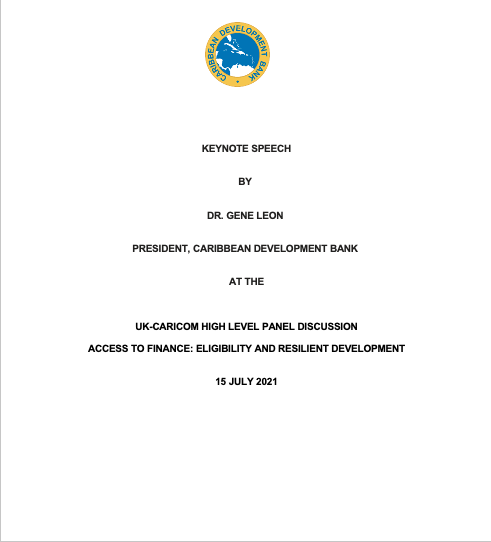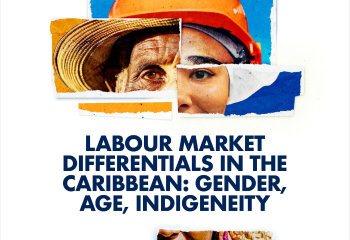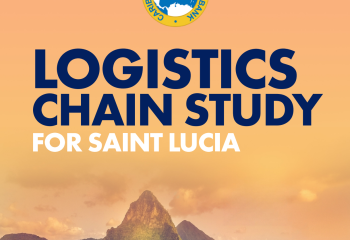Keynote Speech - UK and CARICOM High Level Panel Discussion Access To Finance: Eligibility And Resilient Development

Introduction
The Caribbean is in the midst of a perfect storm created by the collision of the Region’s past and persistent structural weaknesses; the present impact of the COVID-19 pandemic; and expected losses that characterise the Region’s vulnerability to natural hazard events.
At the outset, I want to emphasise that this presents a compelling case for repositioning the Region. That repositioning will necessitate mobilising significant resources, on appropriate terms, not only to restore the Region to its pre-COVID per capita GDP trajectory, but to raise this trajectory in recognition of its sub-optimality (that is, build back better), and to keep countries growing on this new higher trajectory by building their resilience (that is, sustainability).
COVID-19 Pandemic and Its Impact
The COVID-19 pandemic has had a profound impact on Borrowing Member Countries (BMCs) of the Caribbean Development Bank (CDB). Indeed, all but one of the BMCs suffered contractions in GDP in 2020; and of these, 13 recorded double-digit declines. This translated into significant loss of livelihoods, unemployment, and social dislocation. Moreover, with steep falls in government revenue and increases in expenditure to address the health and social implications of the pandemic, debt dynamics worsened and resulted in increased debt overhang. Specifically, the number of countries with debt-to-GDP ratios above 60% increased from nine at the end of 2019 to 13 at the end of 2020; and the average ratio increased from 65% to 82%.
Export Concentration and Economic Growth
While the impact of the pandemic would have been adverse in most scenarios, the depth of the impact has been more pronounced among BMCs because of their high export concentration. The data suggests that the countries worst affected by the pandemic are those concentrated in tourism. While the impact has been more severe in this region, the global evidence indicates that countries with the largest fall in GDP have been either in conflict or are tourism dependent. Many BMCs are highly concentrated in one export; and this export is based largely on natural endowments or comparative advantage. Our countries have not managed to develop the level of competitiveness that would allow them to diversify exports beyond natural endowments, and to experience the rapid growth that derives from the high and diversified exports associated with such competitiveness.
As a result of this significant level of export concentration, growth among the small states of the Caribbean has fallen consistently during the last two decades. During the period 2010 to 2019, growth among CDB’s BMCs averaged 0.4% per year. This rate was below most major country groups and was one-tenth of that of other small states. Moreover, the vulnerability drag or the persistence and duration of the impact of shocks has been higher than other small states. Indeed, if we consider the impact of the previous global shock that affected the Region – the Great Recession – we observe that after declining in 2009, it took four years, on average, for the real GDP of BMCs to reach the 2008 level. More specifically, two BMCs are yet to return to the level of real GDP that existed in 2008; one country took ten years; three took nine years; and one took eight years. Contrastingly, in other small states, using the United Nations definition of small states, real GDP did not fall in 2009 on average.
Consequently, in the wake of the impact of the COVID-19 pandemic, BMCs have been set back in their development process and the pursuit of the SDGs. Experience suggests that this impact will persist, meaning that it will take much time to recover to pre-COVID levels. Poverty has increased in a situation where rates were already high – largely clustered between 20% and 40% of the population. Health and well-being have been adversely affected. The digital divide has excluded some children from access to education during the pandemic, with long-term implications for human capital accumulation, productivity and innovation. Gender equality has been set back, with women disproportionately affected by the pandemic. Inequality has worsened, with only a few benefitting from the pandemic.
Therefore, the first challenge for us is how long will that persistence be, or to set a lower bound, how long will be the half-life of the impact of this pandemic shock, totalling across all dimensions of impact?
Making BMCs More Resilient
A fundamental premise is that sustained growth comes from resilience.
So, how do we make economies more resilient and address the issues of low growth and susceptibility to global shocks?
Such resilience is rooted in innovation that can promote high and diverse export growth. Diverse exports require competitiveness and innovation. Innovation is associated with higher factor productivity and higher growth. Historically, most of the growth of countries is associated with innovation – referred to as the “Solow residual”.
Innovative economies have some important features in common. They have sound institutions that promote good governance and provide the appropriate behavioural incentives. They have sound human capital that provides good capacity for innovation. Innovative economies have supportive infrastructure that facilitates the exchange of ideas, goods, and services by lowering transaction costs. They have markets that promote the availability of finance for investment.
This list provides a broad set of policy and investment priorities for BMCs if they are going to transform themselves into innovative, productive, and resilient economies. That is precisely why we are advocating for a purpose-driven coalition of the willing, a foundation of evidence-based decision creation, a financial system that can accommodate appropriate risk taking, education systems that promote critical innovating learning, and a culture that embraces creative disruption.
Financing Transformation
How do we finance the transformation of BMCs to innovative economies?
If BMCs are going to make up lost ground in their pursuit of the Sustainable Development Goals (SDGs), there will need to be significant increases in investment. CDB estimates indicate that halving poverty by 2030 on its own will take more than a 100% increase in investment expenditure. Achieving the other 16 SDGs likely will require similarly significant increases in expenditure. This underlines the magnitude of the task at hand and the need for multiple sources of funding and financial instruments, as I noted in my inaugural address to the CDB’s Board of Governors.
Even as we contemplate the volume of finance that will be required to place BMCs on an appropriate development trajectory, we must be cognisant that the development finance milieu of the Region has a critical context that must act as a cross-cutting issue. This context is the susceptibility of the Region to natural hazard events and the increasing intensity and frequency of these natural hazard events that arise from climate change. Natural hazard events typically reduce the capital stock of countries, while also reducing the stream of output from that capital stock – so the efficiency of capital plummets. This means that the realisation of a natural hazard event increases the capital needs of a country and suggests the cost of funding at which this capital is procured should be appropriately lower.
To the contrary, standard capital market dynamics are characterised by a situation where increased perception of risk in the context of susceptibility to natural hazard events increases the rates of interest required of countries. Such market outcomes would almost naturally build in adversity in the debt dynamics of BMCs, given lower output trajectories and higher interest rates – which is part of the debt overhang story in the Region. This market failure and the expected losses associated with natural hazard events in the Region, as well as the persistence of vulnerability drag, increase the level of financing that the static development deficits that currently exist would suggest; but it also suggests the inescapable, maybe even existential, need for appropriately lower-cost financing.
There is also a need for some innovative approaches to financing development in the Region, especially in the area of renewable energy. Such approaches could include crowding-in private finance through policy-based guarantees and insurance to catalyse non-traditional renewable sources such as wave-generated power. This broad approach, maybe the topic of another discussion, highlights the need for purpose-driven collaboration across public and private sectors, mutually interacting as they forge ahead toward a well-articulated and communicated mission.
Conclusion
In summary, the impacts of the COVID-19 pandemic only served to expose the structural weaknesses among BMCs. These impacts have set back BMCs in their pursuit of the SDGs and lowered country welfare. The development challenge coming out of these impacts is not only to recover, but to place countries onto a higher welfare path that makes up for the lost ground in addition to closing the distance to SDGs. This amounts to building resilience by creating innovative economies. Creating innovative economies will require significant financing that takes account of the vulnerabilities of BMCs. Such financing will need to be on more concessional terms; but creative financing modalities will have to be considered, as well.
Thank you.


